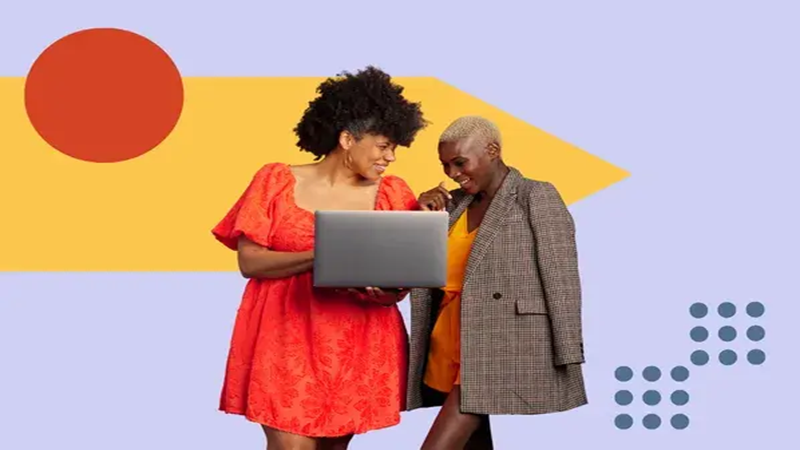In today’s fast-paced digital landscape, static content alone is no longer enough to capture and hold audience attention. With algorithms favoring video and users gravitating toward immersive experiences, content creators are increasingly transforming still images, infographics, and text into visually dynamic narratives. This shift from passive to interactive storytelling is not just a creative evolution — it’s a strategic move that directly impacts engagement, reach, and retention.
The Rise of Visual Storytelling in the Creator Economy
Social platforms have become crowded ecosystems where every scroll delivers a barrage of content. To stand out, creators need to go beyond visuals that simply inform — they need to engage. That’s where visual storytelling comes in.
Visual storytelling leverages movement, sound, pacing, and structure to create a more immersive experience. Instead of showing an infographic or a single photo, creators now tell stories through bite-sized video content, animated sequences, and scroll-stopping visuals that draw viewers in from the first frame. These dynamic stories not only attract more views but also inspire shares, saves, and comments — key indicators of deeper engagement.
Why Static Content Alone Falls Short
For years, static content such as blog posts, images, or quote graphics was the go-to for content creators. While effective in their time, these formats now struggle in environments dominated by short-form videos and interactive features.
Here’s why static content no longer holds the same weight:
- Lack of Movement: It doesn’t offer the dynamic motion that captures attention.
- Minimal Retention: It rarely holds a viewer’s gaze for more than a second or two.
- Limited Emotional Impact: Static formats lack voice, music, or cinematic pacing — elements that evoke emotion and connection.
Dynamic content addresses all these shortcomings. It allows creators to layer visual transitions, music, narration, and text in a way that not only informs but also resonates emotionally.
The Strategic Advantage of Motion-Driven Content
Turning traditional assets into visual stories has opened up new creative and strategic opportunities:
- Repurposing Existing Content: Blog excerpts, product photos, and customer testimonials can be turned into narrated mini-videos.
- Enhancing Brand Identity: Dynamic visuals provide consistency and personality, making brands more recognizable and memorable.
- Increasing Cross-Platform Reach: Short, compelling video stories perform well across all major platforms — from Instagram and TikTok to LinkedIn and Pinterest.
One example of how creators are reimagining their approach is through image to video transformations. This technique enables users to convert any still image into an AI-powered video — adding animation, transitions, and narrative elements to produce a completely new piece of content. The result is a more engaging asset that keeps viewers watching longer and encourages interaction.
Crafting Stories with Intention
The most successful creators don’t just animate images for the sake of movement. They build a visual arc — a beginning, middle, and end — even within a 15-second clip. Storytelling structure matters, even in short-form formats. It might start with a question or pain point, transition to a visually dynamic explanation or demonstration, and end with a clear takeaway or call to action.
Sound design also plays a pivotal role. Music sets the tone. Voiceovers explain and connect. Text overlays reinforce key messages. Together, these elements turn passive viewing into an active experience.
Another key factor is authenticity. Today’s audiences are savvy. Over-polished content can feel impersonal. Instead, creators are opting for more relatable visual stories — ones that feel human and real, even when powered by automation.
Tools Empowering the Shift
The transition from static to dynamic storytelling would be far more difficult without the rise of accessible, intuitive tools. What once required expensive software and advanced editing skills can now be done in a few clicks. These platforms allow creators to work smarter — not harder — when building their content strategies.
For instance, invideo AI offers a wide range of video making apps that empower creators to easily craft compelling visual stories. These apps come loaded with templates, automated scene transitions, AI-generated scripts, and audio integration — simplifying the entire process for users at any skill level. Whether you’re repurposing a blog post, showcasing a testimonial, or launching a product, such apps help turn your ideas into polished, engaging visual narratives in minutes.
This ease of use is crucial in the creator economy, where content volume and speed often determine success. By minimizing the time and effort needed to produce dynamic content, creators can focus more on their storytelling and less on the technical details.
Platform-Specific Storytelling
Understanding the nuances of each platform is essential when turning content into visual stories. What works on YouTube might need adaptation for Instagram Reels or TikTok. For instance:
- On Instagram Reels: Fast cuts, bold text, and music-driven visuals are more effective.
- On TikTok: Raw, authentic storytelling with a casual tone performs best.
- On LinkedIn: Professionally styled motion graphics with informative narration stand out.
The key is to customize the same story for multiple platforms while keeping the message intact. Tools that allow easy resizing, cropping, and reformatting save valuable time during this process.
Data-Driven Creativity
Another advantage of dynamic visual content is that it provides more measurable data. Platforms offer metrics such as watch time, drop-off rates, and interaction patterns — insights that creators can use to refine future content.
For example, if data shows that viewers consistently drop off at the 10-second mark, the creator might restructure the story to place the hook earlier. Or if certain types of transitions drive higher engagement, those can be emphasized more in future videos.
By tracking these performance indicators, creators can blend creativity with strategy — delivering not just beautiful content, but impactful stories that meet audience needs.
Conclusion
The evolution from static content to dynamic visual storytelling isn’t just a trend — it’s a response to how people now consume, engage with, and respond to media. By leveraging motion, sound, and narrative, creators can turn traditional assets into powerful engagement tools that resonate deeply with their audiences. With the help of accessible tools and a thoughtful approach to storytelling, anyone can transform their content into something memorable, shareable, and truly impactful.

